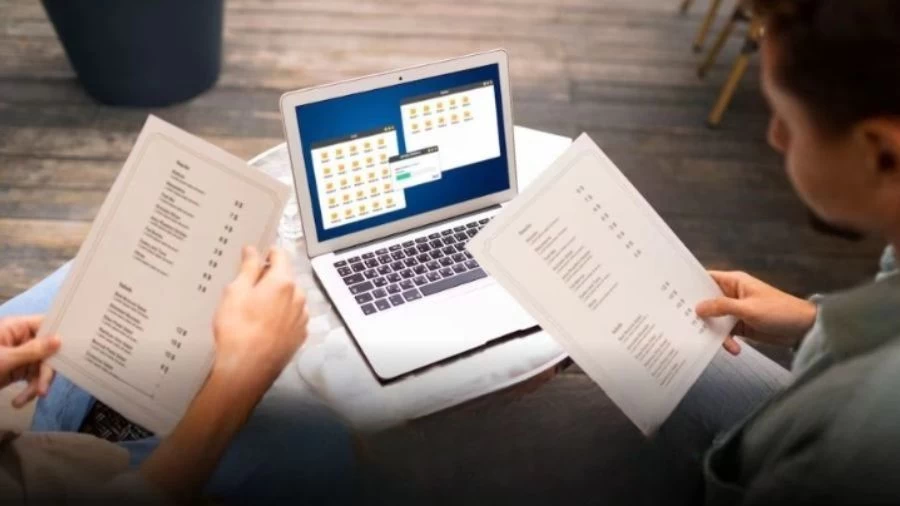
When is Q3 Estimated Tax Due Date 2023? What Are the Due Dates for Estimated Tax Payments 2023?
The due date for Q3 Estimated Tax for 2023 is September 15, 2023, and it's important for self-employed individuals to meet this deadline to avoid potential underpayment penalties.
Updated Dec 18, 2023
On This Page
When is Q3 Estimated Tax Due Date 2023?
For self-employed individuals, the Q3 estimated tax due date for the year 2023 is September 15, marking the third installment of quarterly payments required by the IRS. These payments are necessary if the individual anticipates a tax liability of at least $1,000 for the calendar year or owes taxes from the prior year.
To determine the accurate amount for this payment, calculating taxable income by considering adjusted gross income, deductions, and tax credits for the specific tax year is crucial.
Utilizing resources like Form 1040-ES or the IRS's tax withholding calculator can offer assistance in estimating quarterly tax obligations, ensuring compliance and preventing potential penalties for underpayment. It's worth noting that the deadline for the fourth quarter's estimated tax payment in 2023 is January 16, 2024.
What Are the Due Dates for Estimated Tax Payments 2023?
The due dates for 2023 estimated tax payments provide a structured schedule for self-employed individuals and those with taxable income. It's worth noting that certain exceptions allow deviations from this schedule. For instance, if all estimated taxes for the year are paid before April 18, 2023, there's no need for further payments. The four payment deadlines are as follows:
- The 1st payment is due on April 18, 2023, covering earnings from January 1 to March 31
- The 2nd payment falls on June 15, 2023, encompassing income from April 1 to May 31
- The 3rd payment is set for September 15, 2023, for income earned from June 1 to August 31;
- The final 4th payment is due on January 16, 2024, covering income generated from September 1 to December 31.
Additionally, if the 2023 tax return is filed and the entire balance is paid by January 31, 2024, the final estimated payment, typically due on January 16, 2024, can be avoided. The specific due date for making estimated tax payments is contingent upon factors like taxable income and the source of income, with provisions for those predominantly earning income from farming or fishing.
How to Estimate Taxes for an Income Tax Extension?
When applying for an income tax extension, ensure accurate tax estimation to prevent potential IRS penalties. File a six-month extension by the tax filing deadline and include an estimated tax payment if you're not accustomed to making quarterly tax payments but need more time for return preparation. It's crucial to understand that the extension offers extra time for paperwork compilation, not for tax payment.
To estimate taxes owed, utilize the 2022 Estimated Tax Worksheet from IRS Form 1040-ES or consult tax calculators or software. Taxpayers have various payment options, including online IRS accounts, the IRS2Go app, IRS Direct Pay, or the U.S. Treasury's Electronic Federal Tax Payment System.
While debit or credit payments are possible, electronic payment methods are strongly encouraged by the IRS for a streamlined process. Ensuring accurate estimation and timely payments facilitates a successful navigation of the tax extension process and prevents associated penalties.
Discover MarketsHost, your source for practical financial advice and business tips.
How to Pay Quarterly Taxes or Make Estimated Tax Payments?
Paying quarterly taxes or making estimated tax payments is essential for individuals who have income not subject to withholding, such as self-employed individuals, freelancers, and business owners. Here's a detailed overview of how to go about it:
Determine Your Estimated Tax
Calculate your estimated tax liability for the year. This can be done using the 2022 Estimated Tax Worksheet found on IRS Form 1040-ES. It's crucial to estimate your income and deductions accurately to avoid underpayment or overpayment.
Payment Schedule
The IRS typically expects estimated tax payments to be made in four equal installments. These payments are due on specific dates throughout the year: April 15th, June 15th, September 15th, and January 15th of the following year. Note that if any of these dates fall on a weekend or holiday, the deadline is extended to the next business day.
Payment Methods
Online IRS Account
- You can pay your estimated taxes online by setting up an account on the IRS website.
IRS2Go App
- The IRS2Go app allows you to make payments using your mobile device. It's a convenient option for those on the go.
IRS Direct Pay
- The IRS Direct Pay system enables you to make payments directly from your bank account. It's a secure and free method.
Electronic Federal Tax Payment System (EFTPS)
- EFTPS is a secure and flexible way to pay your taxes electronically. You can schedule payments in advance.
Debit or Credit Card
- You can pay with a debit or credit card, but be aware that additional fees apply when using this method.
Cash Payments
- Some retail partners of the IRS accept cash payments for estimated taxes. Check with the IRS for a list of authorized partners.
Check or Money Order
- While less common, you can still mail your estimated tax payments using IRS Form 1040-ES and a payment voucher. However, electronic methods are encouraged for their efficiency and accuracy.
IRS Form 2210
If you find that you've overpaid or underpaid your estimated taxes during the year, you may need to attach IRS Form 2210 to your annual tax return to explain the discrepancies. Overpayments can be refunded or applied as a credit to future tax payments.
Seek Professional Advice
The calculations for estimated taxes can become complex, especially for those with variable income. If you have questions or need assistance, consider consulting a qualified tax preparer or accountant. Special rules and exceptions may apply to certain groups, such as farmers, fishermen, and certain household employers, so professional guidance can be particularly beneficial in these cases
When is Q3 Estimated Tax Due Date 2023 - FAQs
1. Who needs to make estimated tax payments?
Self-employed individuals, retirees, investors, and others who do not have taxes withheld or have insufficient withholding may need to make estimated tax payments.
2. How do I calculate my estimated tax payment?
Use Form 1040-ES and its instructions to estimate your taxable income, deductions, and credits for the tax year.
3. When are the due dates for estimated tax payments in 2023?
The due dates are April 18, June 15, September 15, and January 16, for the first, second, third, and fourth quarters, respectively.
4. What happens if I underpay my estimated taxes?
Underpayment may result in a penalty, but exceptions apply if you meet certain criteria.
5. Can I pay my estimated taxes electronically?
Yes, you can pay online through IRS Direct Pay, or use Debit/Credit Cards, Digital Wallet, or the Electronic Federal Tax Payment System (EFTPS).
6. Can I apply an overpayment from the previous year to my estimated tax?
Yes, you can credit an overpayment from the prior year's tax return toward your current year's estimated tax.




